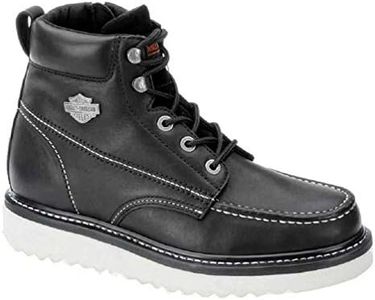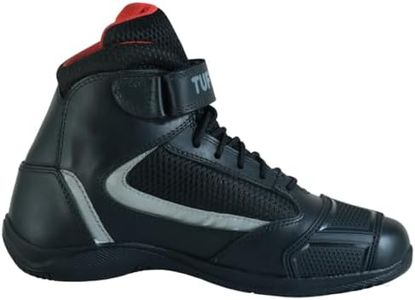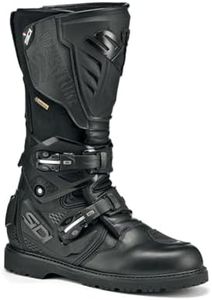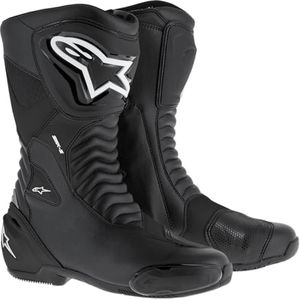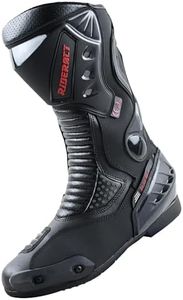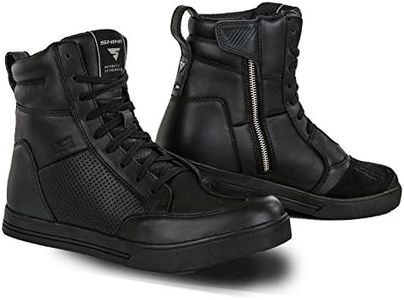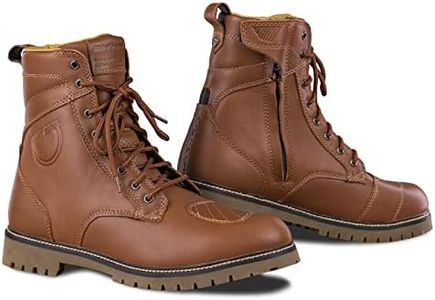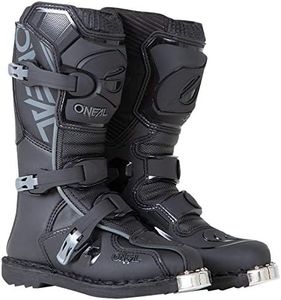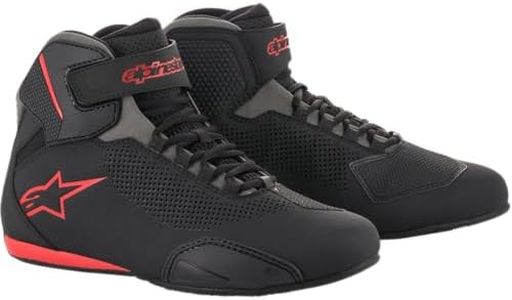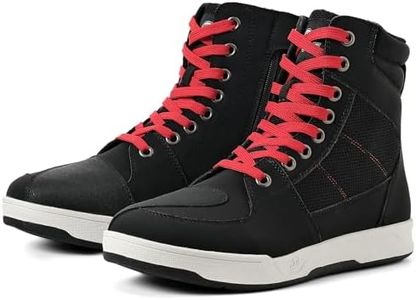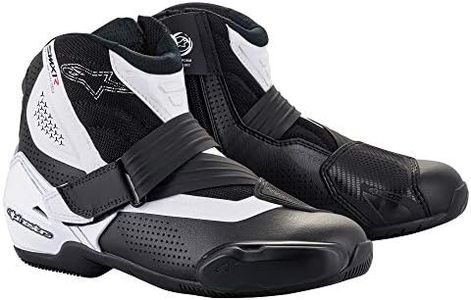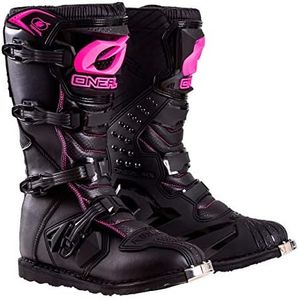We Use CookiesWe use cookies to enhance the security, performance,
functionality and for analytical and promotional activities. By continuing to browse this site you
are agreeing to our privacy policy
10 Best Motorcycle Boots
From leading brands and best sellers available on the web.Buying Guide for the Best Motorcycle Boots
When choosing motorcycle boots, it’s important to think about both your safety and comfort. Good motorcycle boots protect your feet and ankles in case of an accident, keep you comfortable during long rides, and can even help you grip the bike better. Before picking a pair, consider where and how you’ll be riding, the type of terrain, and the weather conditions you might face. These boots aren’t just about looks—they need to match your riding style and needs to keep you safe and happy on the road.Protection LevelProtection level refers to how much safety the boots provide for your feet, ankles, and lower legs. This is crucial because motorcycle riding exposes your lower limbs to potential injuries if there’s a fall or crash. Boots can offer basic protection with reinforced materials or more advanced features like ankle guards, heel cups, and shin plates. For riders who commute in the city, lighter boots with basic armor might be enough, while those who ride off-road or at higher speeds should look for boots with more comprehensive protection. Think about your riding environment and the risks involved to decide how much protection you need.
Boot HeightBoot height means how far up your leg the boots go, and it plays a big role in both protection and comfort. Short boots cover just the ankle and are lighter and easier to walk in, making them good for city or casual rides. Mid-height boots cover more of the lower leg, offering increased protection without being overly bulky. Full-height or tall boots, which go up to the calf or even higher, are best for maximum protection and are favored for racing or off-road riding. To pick the right height, think about your typical riding style. If you want flexibility and ease when walking, short boots work well. For higher speed or rougher terrains, taller boots are better.
MaterialThe material of motorcycle boots affects durability, comfort, and the level of protection. Common materials include leather, synthetic fabrics, and combinations of both. Leather is traditional, very tough, and offers good abrasion resistance, making it ideal for high-speed or long-distance riding. Synthetic materials can be lighter, more breathable, and sometimes more water-resistant. If you ride in wet or hot climates, you might prefer synthetics or a blend for comfort. Match your choice to your main riding conditions—leather for rugged protection, synthetics for light weight and versatility.
Closure SystemClosure systems, like laces, zippers, Velcro, or buckles, keep the boots secure on your feet and affect how easy they are to put on and take off. Laces offer good adjustability but can come loose unless protected. Zippers make wearing and removing boots quick, while Velcro and buckles add security and ensure a snug fit. Boots with combination closures often provide both convenience and safety. If you want speed and simplicity, zippers and Velcro are good options; if you value fine-tuned adjustment, look for boots with laces or buckles.
Waterproofing and VentilationWaterproofing keeps your feet dry in wet weather, while ventilation ensures your feet stay cool during hot rides. Some boots come with waterproof liners, making them suitable for rainy conditions or year-round use, but these might be less breathable. Boots with good ventilation panels are perfect for summer riding but may not keep out water. Think about your climate and typical weather: if you often ride in the rain, prioritize waterproof boots. For mostly warm, dry riding, ventilated boots will be more comfortable.
Sole and GripThe sole of a motorcycle boot affects how well you grip the pedals and the ground, which is key for stability and safety especially at stops or in slippery conditions. Hard soles give more durability and last longer, while softer soles provide better grip but may wear down faster. Some boots have oil-resistant and anti-slip soles for added safety. Choose a sole suited to your typical riding—city riders might prefer flexible soles for easier walking, while touring and off-road riders need tougher, grippier soles.
Fit and ComfortFit and comfort are critical because you’ll spend a lot of time in your boots. A good fit ensures that your boots stay secure without pinching or causing blisters, and high-quality linings and padding can reduce fatigue on long rides. Always try on boots with the socks you’ll be riding in. If your rides are usually short, you might accept a slightly stiffer feel for extra protection, but longer rides demand maximum comfort. Think about how much walking you’ll do in the boots as well—some provide features for both riding and walking comfort.
